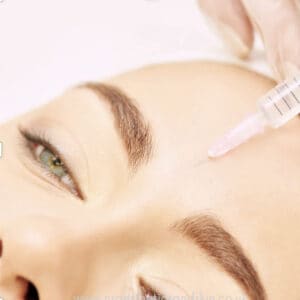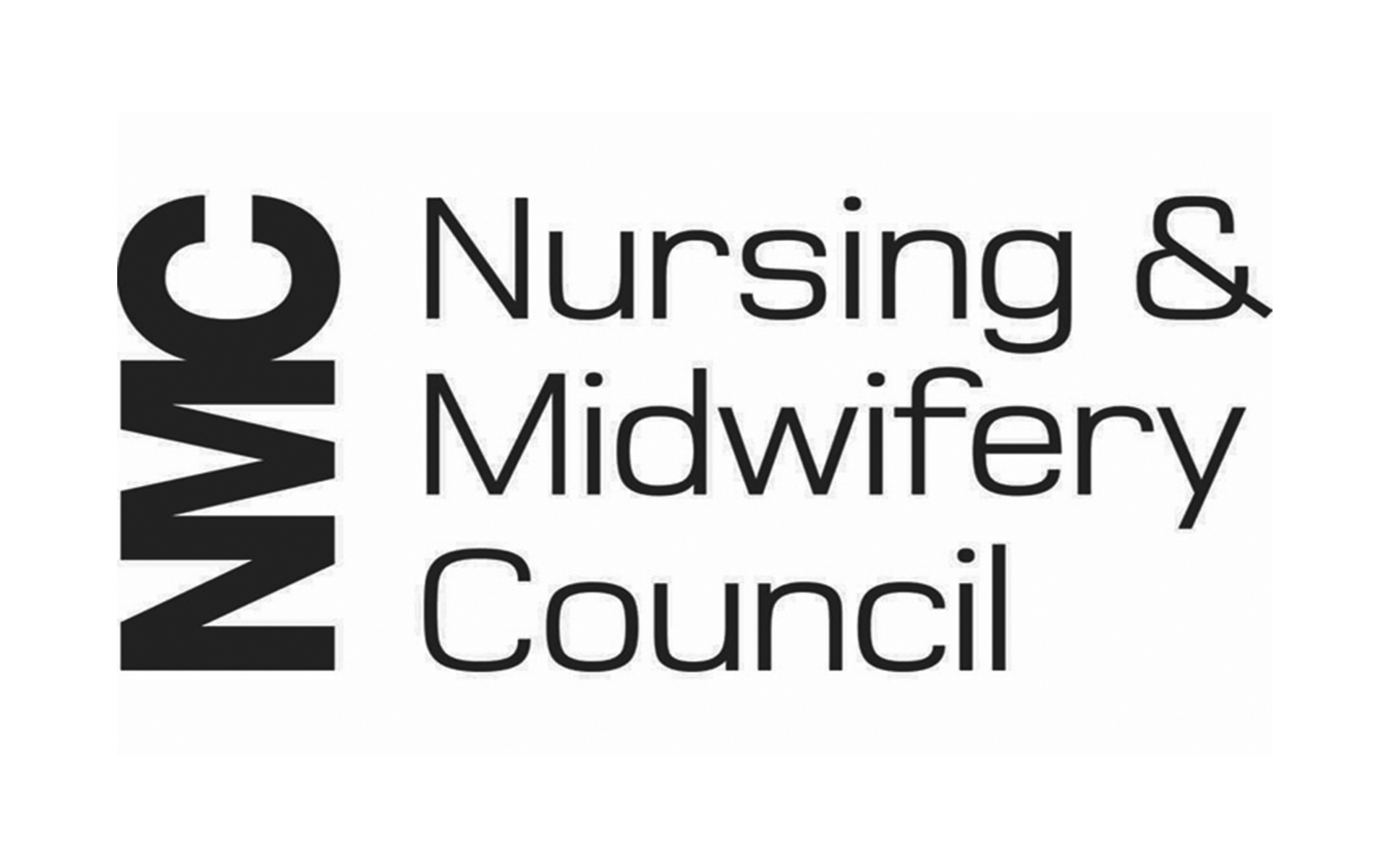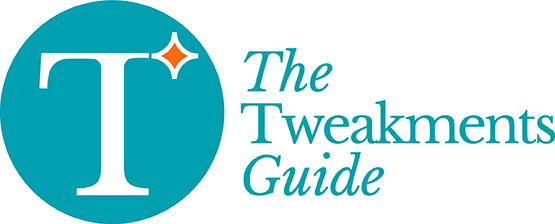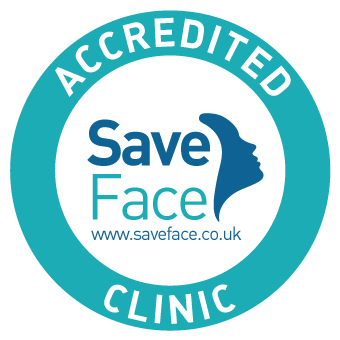
Botox® is a brand name for a type of neurotoxin called botulinum toxin type A. It is a protein produced by the bacterium Clostridium botulinum. Botox is primarily used for cosmetic purposes to reduce the appearance of wrinkles and fine lines on the face by temporarily paralyzing the muscles responsible for creating those wrinkles, commonly referred to as an anti-wrinkle treatment.
Botox is also used medically for a variety of conditions, such as muscle spasms, chronic migraines, excessive sweating, and even some bladder and bowel disorders. When used for medical purposes, Botox is injected directly into the affected muscle or gland. It is a prescription only medicine, requiring a Nurse / Midwife Prescriber or Doctor to prescribe.
Where is Botox injected?
Botox is typically injected directly into the muscles of the face or neck. The exact location of the injections depends on the specific area being treated and the desired outcome.
For cosmetic purposes, Botox is commonly injected into the muscles responsible for creating wrinkles and fine lines on the forehead, between the eyebrows commonly known as frown lines, and around the eyes (crow’s feet). It can also be used to lift the corners of the mouth, create a ‘lip flip’ , under the eye area often called a ‘jelly roll’ , create a brow lift, treat bunny lines, gummy smile, soften smokers lines , masseter jawline slimming, smooth out neck bands, and reduce the appearance of chin dimpling.
For medical purposes, Botox is injected into the affected muscles or glands to treat conditions such as muscle spasms, teeth clenching known as TMJ, chronic migraines, excessive sweating, and even some bladder and bowel disorders.
Botox & results
The results of Botox injections typically begin to appear within a few days to a week after treatment and can last for several months. The exact duration of the results can vary depending on the individual and the specific area being treated.
For cosmetic purposes, Botox can help reduce the appearance of wrinkles and fine lines on the face, resulting in a more youthful and refreshed appearance. The effects of Botox typically last for 3-4 months, after which the muscles gradually regain their ability to contract, and wrinkles may begin to reappear. With repeated treatments, however, the muscles may become trained to contract less forcefully, leading to longer-lasting results.
It is important to note that the results of Botox injections are not permanent, and repeated treatments may be necessary to maintain the desired results. Additionally, there are potential risks and side effects associated with the use of Botox, which should be discussed with your healthcare provider before considering this treatment option.
Botox & pregnancy
The safety of using Botox during pregnancy has not been established. Therefore, it is not recommended for pregnant women to receive Botox injections, as there is a potential risk to the developing fetus.
Botulinum toxin can potentially spread beyond the injection site, and it is not yet known whether this can harm a developing fetus. In addition, the effects of Botox on a pregnant woman’s body are not fully understood.
If you are pregnant or planning to become pregnant, it is important to consult with your healthcare provider before considering any cosmetic or medical treatments, including Botox. Your healthcare provider can help you weigh the potential risks and benefits of such treatments and make an informed decision about what is best for you and your baby.
Botox & Breastfeeding
The safety of using Botox while breastfeeding is not fully established, and there is a potential risk of the toxin passing into breast milk and affecting the nursing infant. Therefore, it is generally recommended that women avoid Botox injections while breastfeeding.
Although there is limited information on the safety of Botox during breastfeeding, it is known that the toxin can potentially spread beyond the injection site and may affect the function of the surrounding muscles. This could potentially impact the ability of the breastfeeding mother to nurse her infant.
If you are breastfeeding and considering Botox treatment, it is important to consult with your healthcare provider to discuss the potential risks and benefits of the treatment, as well as any possible alternatives. Your healthcare provider can help you make an informed decision about what is best for you and your baby.
Botox & alcohol
Drinking alcohol before or after Botox injections is generally not recommended. Alcohol can increase the risk of bruising and swelling at the injection site, which can lead to complications and affect the results of the treatment. Additionally, alcohol can affect blood flow and increase the risk of bleeding, which can also increase the risk of complications.
Furthermore, alcohol consumption can also affect the metabolism of Botox, potentially decreasing the effectiveness of the treatment and shortening its duration. It is generally recommended to avoid alcohol for at least 24 hours before and after receiving Botox injections to minimize the risk of complications and to ensure optimal results. It’s always best to follow your healthcare provider’s instructions for before and after care following Botox injections.
Botox & Migraines
Botox has been approved by the US Food and Drug Administration (FDA) for the treatment of chronic migraines. Chronic migraines are defined as headaches that occur on 15 or more days per month, with each headache lasting four hours or more.
Botox injections for migraines involve injecting small amounts of botulinum toxin into several points in the head and neck muscles. This works by blocking the release of chemicals that transmit pain signals, which can help reduce the frequency and intensity of migraines.
The treatment is typically administered once every 12 weeks by a healthcare professional who is trained in Botox injections. It may take several treatments to achieve the desired results, and the effects of each treatment can last up to 12 weeks.
It is important to note that Botox is not suitable for all types of migraines, and it should only be used under the guidance of a healthcare professional.
Botox & side effects
Like any medical treatment, Botox injections can have potential side effects, which may include:
- Temporary bruising, swelling, or redness at the injection site
- Headache or flu-like symptoms
- Nausea or upset stomach
- Temporary weakness or drooping of the facial muscles
- Dry mouth or eyes
- Itching or rash
- Difficulty swallowing or speaking
In rare cases, more serious side effects may occur, such as an allergic reaction or difficulty breathing. It is important to seek medical attention immediately if you experience any symptoms of an allergic reaction, such as hives, swelling, or difficulty breathing.
It is important to note that the risk of side effects can be minimized by receiving Botox injections from a licensed and experienced healthcare professional who is trained in the use of Botox. Additionally, it is important to discuss your medical history and any medications you are taking with your healthcare provider before considering Botox injections, as certain conditions or medications may increase the risk of complications. It is important to only receive Botox injections from a licensed and experienced healthcare professional to minimize the risk of complications.
Botox & brands
There are several brands of botulinum toxin type A that are approved for use in the UK
These brands all contain botulinum toxin type A as the active ingredient, but they may differ in their formulation and dosing
While these brands all contain botulinum toxin type A, they may have different characteristics that may make them more appropriate for certain individuals or certain treatment areas. It is important to discuss your individual needs and goals with your healthcare provider to determine which brand of botulinum toxin type A is right for you.
Botox & cost
The cost of Botox injections can vary depending on several factors, such as the area being treated, the amount of Botox needed, and the healthcare provider’s experience and location.
For cosmetic purposes, the cost of Botox injections can range from a £150 upwards to a few hundred pounds per treatment, depending on the extent of the treatment and the healthcare provider. Generally, larger treatment areas such as the forehead, crow’s feet, or frown lines may require more Botox, and therefore may be more expensive.
For medical purposes, such as the treatment of chronic migraines or excessive sweating, the cost of Botox injections may be covered by insurance, depending on the individual’s insurance plan and the specific medical condition being treated.
It is important to note that the cost of Botox injections is typically not covered by insurance for cosmetic purposes, and it is important to factor in the ongoing cost of maintenance treatments every few months to maintain the desired results.
Ultimately, the cost of Botox injections should be discussed with your healthcare provider, who can provide a more accurate estimate based on your individual needs and goals.
For more information on any aspects of this blog contact Nicky at NR Aesthetics & Skin Clinic based in Bromsgrove Worcestershire to arrange a face-to-face consultation.








